ARCO DEL TRIUNFO (Arch of Triumph)
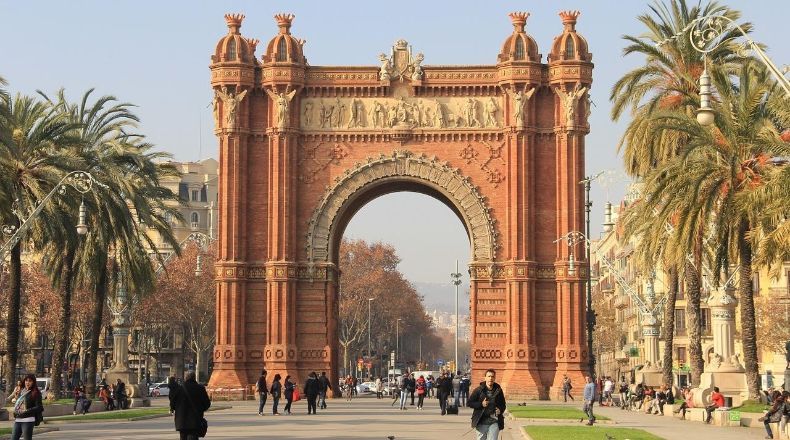
One of the symbols of the city, the Arch of the Triumph of Barcelona was designed by the architect Josep Vilaseca i Casanovas and is a few steps from El Borne and the Citadel Park.
Despite its name, the monument does not commemorate any military triumph, but was built as the main entrance to the first Universal Exhibition of Barcelona that took place in 1888. The monument is located in Passeig de Lluis Companys, a meeting place for families, ideal for walking and for various activities such as cycling, or learning to skate. It is also the place chosen for celebrations of various events.
Photography lovers will find in the Arch of Triumph, an ideal place to take photos, either from a close point where you can capture the details of the decoration made by the Catalan sculptor Josep Reynes, or from the end of the Passeig Lluis Companys where you will get a fantastic shot with the arch background.
Good to know: Although there is an elevator that allows you to go up to the top of the arch, the access to it is closed. It's only permitted, under request, and only in very exceptional occasions.
LAS RAMBLAS (Ramblas)

La Rambla, also known as Las Ramblas, is one of the main arteries of Barcelona and one of the best known places in the city. It is a pleasant walk of 1.3 kilometers that connects the Plaza de Cataluña with the old port of the city.
The different ramblas, starting from the Plaza de Cataluña, are as follows:
Rambla de Canaletes: Rambla de Canaletes is located in the highest part of the Ramblas, next to Plaza Catalunya (Plaza de Cataluña), is a very busy and lively area.
Rambla de los Estudios: Rambla de los Estudios: Named because of the old location of the Estudio General or University, it is also known as the Rambla de los pájaros (Bird Rambla) because the old Mercado de los Pájaros (Bird Market) was located nearby.
Rambla de las Flores: The most colorful and perfumed part of Las Ramblas is full of stands of flowers and plants capable of illuminating the darkest of days. In this area is the mythical Boquería Market.
Rambla de los Capuchinos: Also known as the Rambla del Centro, it has numerous places of interest in its surroundings, such as the Gran Teatro Liceo, the Palacio Güell, or the nearby Plaza Real.
Rambla de Santa Monica: It is known as the vestibule of the port, it is full of lively bars and restaurants in the area. At the end of the road, just before the sea, is the Mirador de Colón.
BARRIO GÓTICO (Gothic Neighbourhood)

The Gothic Neighbourhood (Barri Gòtic) is, together with Las Ramblas, one of the essential places to visit in Barcelona. It is the central element of the Ciutat Vella municipal district, the old quarter of Barcelona, which is the largest treasure of Gothic buildings in Europe. A large number of bars, restaurants and shops keep the area lively until late into the night.
The Gothic Quarter not only contains the remains of the Roman Barcino, but many of the main medieval buildings of the county town, from the Cathedral and the Church of Pi, to the head office of the royal power in the complex of buildings that rise around the King's Square. Some of these buildings house the fascinating history museum of the city.
What to see in the Gothic Quarter: 7 must-see places
1.Barcelona Cathedral
2.Plaça del Rei (King's Square)
3.Frederic Mares Museum
4.Plaça de Sant Jaume (St. James's Square)
5.Plaça del Pi and surroundings
6.Plaça Reial (Royal Square)
7.Gothic Quarter Churches
PARK GÜELL (Güell Park)
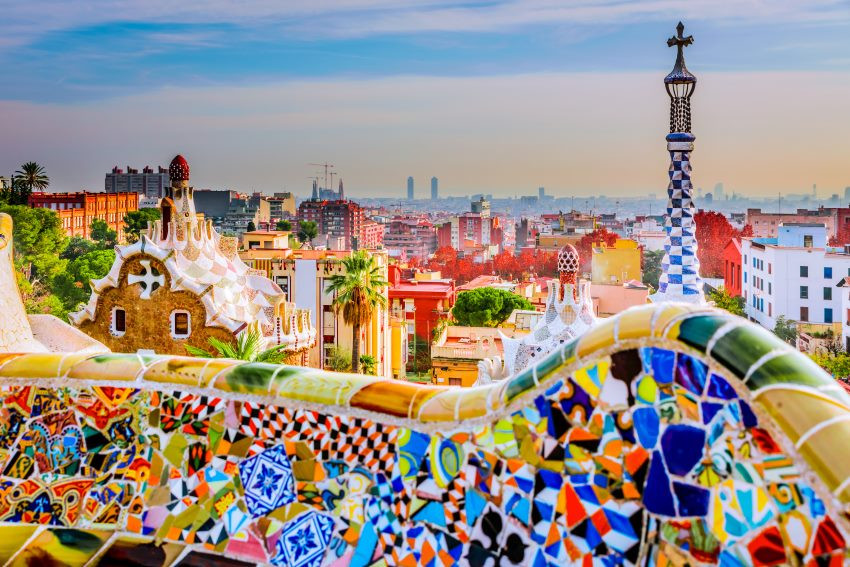
The Park Güell, one of Antoni Gaudí's most emblematic works, is a monumental enclosure unique in the world.
More than a park, it is a symbol of Barcelona. Park Güell, one of Antoni Gaudí's most emblematic works, is unique in the world because it was conceived as a monumental enclosure where the natural environment is inseparable from architectural elements.
Its uniqueness was recognized in 1969, when it was declared a historical-artistic monument of national interest and, above all, in 1984, when it was declared World Heritage by UNESCO.
Its consideration as a monumental space of international recognition does not diminish its importance as a public park equipped with all the facilities and services that make it suitable for the recreation of the neighborhood and all visitors in general.
Since the completion of the comprehensive rehabilitation carried out in 2006, a guide service has been offered to facilitate knowledge of the park for people with visual and hearing disabilities.
CASA BATLLÓ (Batlló House)
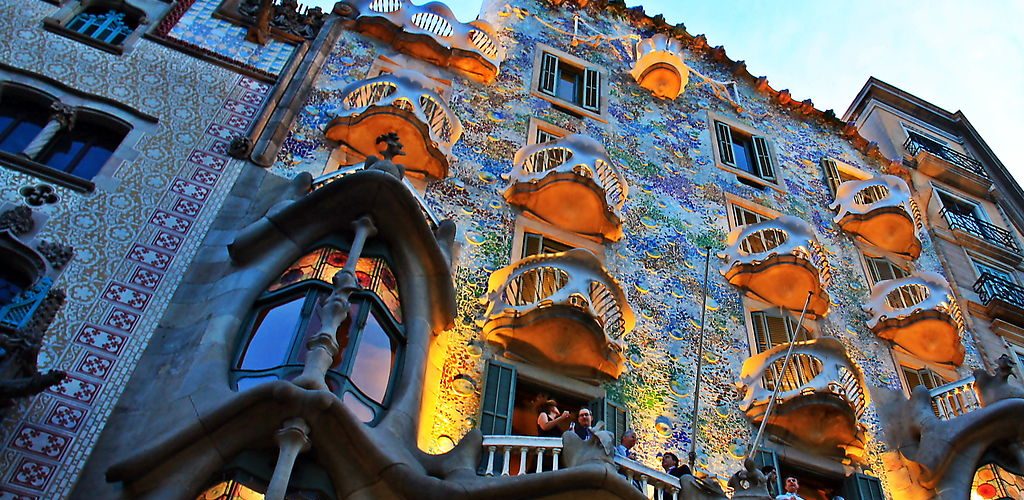
Built between 1904 and 1906 under the commission of Josep Batlló, the Casa Batlló is Gaudí's masterpiece, a key piece of Barcelona's modernist architecture that has become more than a building a myth of art.
Behind the fascinating façade of the Casa Batlló hides a fantastic world in which, with the help of the audio guide, visitors can discover and enjoy the surprising universe of Gaudí.
Once inside the eye-catching building, visitors visit the old residence of the Batlló family to get to know each of its curious corners, highlighting the attractive patio of lights and the roof with its mythical chimneys, one of the most famous parts.
Casa Batlló is located in the heart of the city being one of the most visited tourist places and best valued by visitors to Barcelona.
PLAYA DE LA BARCELONETA ( Barceloneta Beach )

Barceloneta Beach is, together with Sant Sebastià Beach, one of the largest and oldest beaches in Barcelona.
Its central location and easy access by public transport make it one of the preferred beaches for foreign users and local young people who practice sports.
The beach has an extensive sports and leisure facility consisting of several volleyball courts, children's play areas, ping-pong table, a gymnastics area and a "biblio-beach" service.
SAGRADA FAMILIA ( The Holy Family )
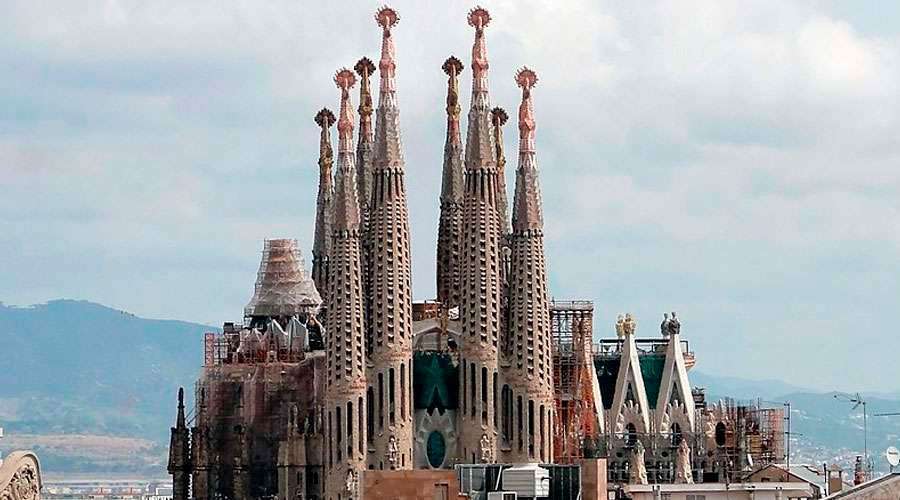
The Sagrada Familia is the best known and most characteristic monument in Barcelona. As the greatest exponent of the modernist architecture created by Gaudí, thousands of tourists come every day to contemplate the curious but unfinished temple.
Construction began in 1882 in a neo-Gothic style. A year later the project was put in the hands of Gaudí, who completely rethought it. Gaudí designed an exceptional and innovative temple that was to be made up of 18 towers, although in the end he only had time to create one of them before his death.
Gaudí died in 1926 leaving unfinished the project that occupied the last years of his life but, thanks to the plans that are conserved, his dream comes true little by little thanks to the work of other artists and the money obtained from donations and visits.
The basilica has 3 symbolic facades:
•Nativity Façade: Dedicated to the birth of Christ, it is a profusely decorated façade full of life.
•Passion Façade: Something more austere and simplified than the other façades, it tries to reflect the suffering of Jesus during the Crucifixion.
•Glory Façade: The main façade, much larger and more monumental than the rest, will represent death, the Last Judgement, Glory and hell. Aware that he would not have time to build it, Gaudí left the sketches so that his successors could finish the work.
TELEFÉRICO DE MONTJUÏC
( Montjuic Cable Car )
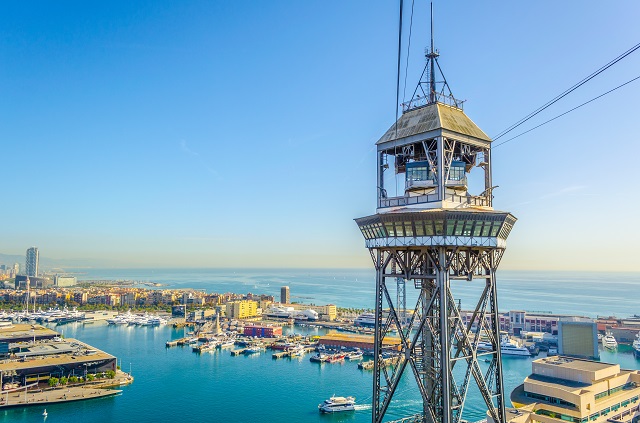
The Telefèric de Montjuïc is the most modern and attractive way to discover how the skyline of Barcelona opens up to the sea. An unforgettable way to climb the castle of Montjuïc, the cable car connects the city with the top of the Montjuïc mountain.
To make this possible, the glazed cabins go up along the 750-metre route until they reach 84.5 metres of unevenness. This ascent shows the whole plain of Barcelona from the Collserola mountain range to the sea. The installation has three stations: Parc de Montjuïc, Miramar and Castell de Montjuïc, and it is fully accessible。
BARRIO DEL BORN (Born Neighborhood)
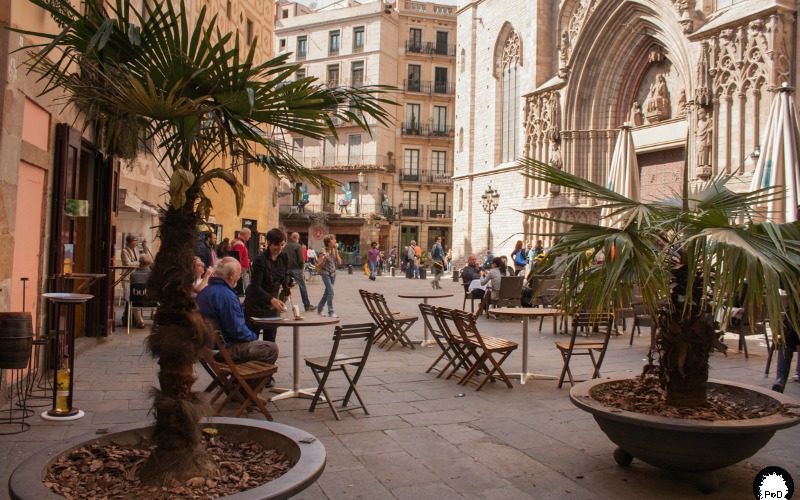
El Born is one of the oldest areas of Barcelona and one of the four neighbourhoods that make up the Ciutat Vella district. Nowadays, it is a very fashionable area, where bars, restaurants and shops proliferate, as well as a lot of culture and nightlife.
Despite its humble beginnings, El Born was the economic epicentre of Barcelona between the 13th and 15th centuries. Thanks to the boom in trade routes, the area prospered economically, as can be seen in the elegant palaces on Calle Montcada. Another notable figure in the neighbourhood is the church of Santa María del Mar, one of the icons of the Born.
The neighborhood lost its notoriety in the following centuries, especially when much of its structure was destroyed to build the Citadel. This extinct military fortress was located in the space currently occupied by the Ciutadella Park. The Triumphal Arch is another of its major monuments.
MERCADO LA BOQUERÍA
(Boquería Market)

The San José Market, better known as "La Boquería", is a central municipal market located in Las Ramblas in Barcelona. It is the ideal place to buy fresh produce, although today the market has become a striking tourist attraction.
The colourful market is a labyrinth of more than 2,500 square metres along which there are more than 300 stalls offering all kinds of products. Eggs, meat, sausage, sweets, fruit juices …It is difficult to imagine a product that cannot be found in La Boquería.
In the place where the market is located was previously located the Convent of San Jose, founded in 1586. With the passage of time La Rambla became a place of great public interest and, after the arson that the monastery suffered, they decided to move the market to the place occupied by the convent.
PLAZA DE ESPAÑA ( Spain Square )

Después de Plaza Cataluña, Plaza España es uno de los ejes de comunicación más importantes de Barcelona. A su alrededor, encontrarás:
•Magic Fountain of Montjuic: First of all, it is the most visited attraction in Plaza España. The Magic Fountain of Montjuic offers a colourful spectacle of water, music and colour with the emblematic image of the National Art Museum of Catalonia. In addition, it is a completely free show.
•Barcelona Pavilion: This small building, by the famous architect Mies van der Rohe, was designed for the Barcelona International Exhibition in 1929. It soon became the archetype of the International Style, which set trends during the 20th century. It is an emblematic example of world architecture.
•Arenas de Barcelona: After decades of neglect, the old bullring was converted into the modern shopping center Arenas de Barcelona, maintaining its original facade. Inside, you can find the best shops and brands of the moment, cinemas and restaurants. Be sure to visit the terrace, which offers beautiful views of Plaza España.
It is unquestionably one of the most emblematic places in Barcelona.
MONASTERIO DE MONTSERRAT ( Montserrat Monastery )
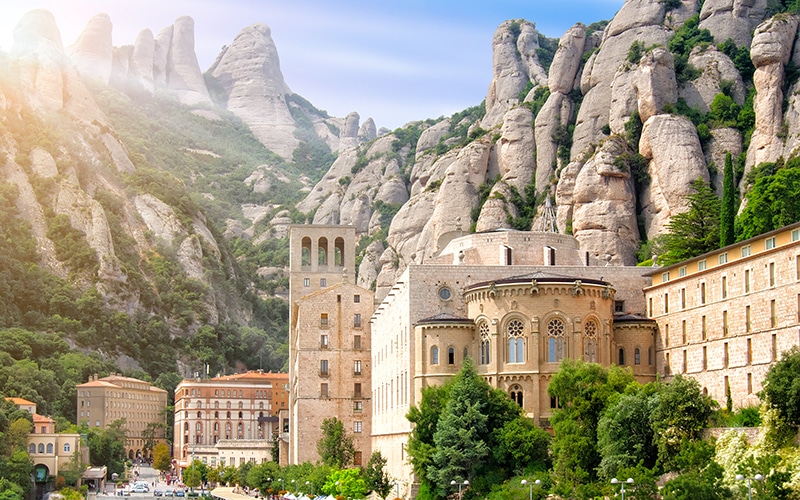
This magnificent mountain and its Sanctuary are full of history, legend and ancient culture. The Monastery of Montserrat is located in an incomparable natural environment that turns the mountain into a small paradise, ideal to enjoy nature and its surroundings, to enter its corners and its peculiar landscapes. Only 50 km from Barcelona, all those who want to visit Montserrat will discover a unique and incomparable place. Much more than a mountain, its characteristics have made it an emblematic place in Catalonia.
In Montserrat you can breathe the spirituality of the Sanctuary and the art offered by the Museum. In addition, among the different activities that can be carried out especially stand out the routes and itineraries where to do trekking, routes that show the wealth of the patrimony of the mountain. However, it is also possible to practice climbing and enjoy the extraordinary views of the high mountain.
